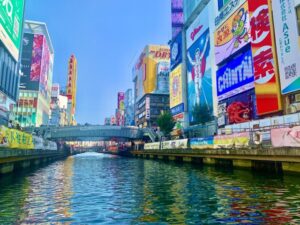- Japanese subtitles -
次は、動詞のグループについて見てみましょう。
まず、辞書に出てくる動詞は、「よむ」「おこる」「はしる」「たべる」「でんわする」のようにすべて、さいごは「う」になります。
そして、活用によって3つのグループに分けることができます。
「1グループ」、「2グループ」、「3グループ」です。
1グループ1はu-verb(う・バーブ)、五段動詞、2グループは、ru-verb(る・バーブ)、一般動詞、3グループは、不規則動詞とも呼ばれます。
わかりやすいのは3グループで、「する」「くる」だけです。
「る」以外で終わる動詞は、すべて1グループです。
「る」で終わる動詞の中で、「-aru」[-uru]「-oru」は、全て1グループです。
「-iru」「-eru」で終わる動詞は、2グループのことが多いです。
1グループの動詞もありますから気をつけましょう。
If you have any questions, ask them for free! ➡ Japanese Question Form

There's so much information contained in those kanji!
漢字には情報(じょうほう)が詰(つ)まってる!
1文字ずつに意味があります。
Each letter has its own meaning.
例えば、石がつく言葉(ことば)
For example, words with 石(stone).
石頭
石炭
石像
石橋
石材
石の1文字を、見ただけで、意味(いみ)を想像(そうぞう)できます。
Just by looking at a single character on a stone, you can imagine its meaning.
漢字は、「かんむり」、「つくり」、「へん」、などが合わさってできています。
Kanji characters are made up of “Kanmuri”, “Tsukuri”, “Hen” and so on.
例(たと)えば、さんずい 氵 のつく漢字は、水(みず)に関係(かんけい)します。
For example, the kanji character 氵 (Sanzui 氵) is related to water.
温 泳 川 海 汽 泣 源 湖 港 消
深 洗 浅 池 注 湯 波 浴 流
「かんむり」、「つくり」、「へん」などの意味(いみ)を覚(おぼ)えておくと、漢字をとても覚えやすくなります。
Remembering the meanings of “Kanmuri”, “Tsukuri”, “Hen”, etc. will make it much easier to remember the kanji.

Tokyo vs. Osaka: Which is Better for Foreign Residents in Japan?
Japan is home to several major cities, known collectively as the “Big Five Cities” which include Tokyo, Osaka, Nagoya, Sapporo,

Guide to Side Jobs for Foreigners in Japan
Since 2023, price increases in Japan have become more noticeable, and many people are feeling that their salary from the

Essential Interview Tips for Success at Japanese Companies
There may be some foreigners who are looking for a job in Japan, but in fact, many of those foreign

Tokyo vs. Osaka: Which is Better for Foreign Residents in Japan?
Japan is home to several major cities, known collectively as the “Big Five Cities” which include Tokyo, Osaka, Nagoya, Sapporo,





